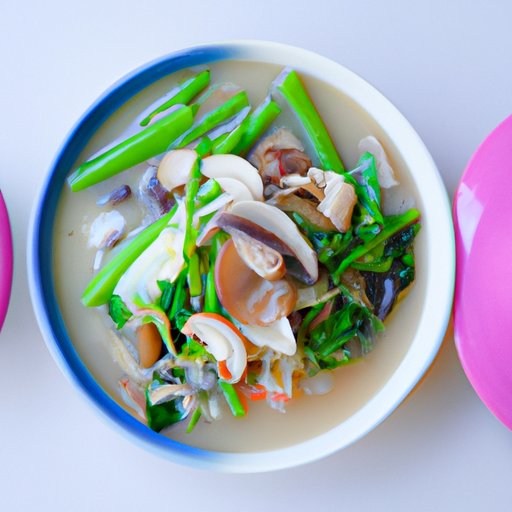Introduction
A soft food diet is a type of eating plan that includes only soft, easy-to-chew foods. This type of diet is often recommended by doctors and nutritionists to individuals who have difficulty chewing or swallowing. It can also be used as a way to get adequate nutrition while avoiding hard-to-digest foods. In this article, we’ll explore what a soft food diet entails and offer tips on how to follow it successfully.
Overview of What a Soft Food Diet Entails
The goal of a soft food diet is to make food easier to chew and swallow. Generally, foods that are part of a soft food diet are those that require minimal chewing effort. According to the American Speech-Language-Hearing Association, some examples of soft foods include cooked eggs, smooth peanut butter, yogurt, mashed potatoes, cooked vegetables, canned fruits, and soft cheeses. Soft breads, soft tacos, and cooked cereals are also included in this type of diet.
In addition to being easy to chew, the foods included in a soft food diet are also nutritious and provide important vitamins and minerals. Eating a variety of soft foods can help ensure that your body is getting all the nutrients it needs. For example, a study published in the journal Nutrients found that soft diets can provide adequate amounts of energy, protein, and essential fatty acids.

Common Foods to Avoid on a Soft Food Diet
While there are many soft foods that are recommended as part of a soft food diet, there are also some foods that should be avoided. High-fiber foods, such as raw vegetables, nuts, and seeds, can be difficult to digest and should be avoided. Hard candies and other hard foods, such as chips and pretzels, should also be avoided, as they can be difficult to chew and swallow.

Tips for Following a Soft Food Diet Successfully
Following a soft food diet can be challenging, but there are some tips that can help make it easier. First, choose soft fruits and vegetables that are easy to chew and digest, such as applesauce, mashed bananas, and cooked carrots. Stock up on soft grains, such as oatmeal, cream of wheat, and grits, as these provide important vitamins and minerals. Investing in a blender or food processor can also make it easier to prepare soft foods. Finally, experiment with different recipes to find meals that are both healthy and enjoyable.
Conclusion
A soft food diet is a type of eating plan that includes only soft, easy-to-chew foods. It can be beneficial for individuals who have difficulty chewing or swallowing, as well as those who want to get adequate nutrition while avoiding hard-to-digest foods. When following a soft food diet, it’s important to choose soft fruits and vegetables, stock up on soft grains, invest in a blender or food processor, and experiment with different recipes. With a little bit of planning and creativity, it’s possible to enjoy a wide variety of delicious and nutritious soft foods.
(Note: Is this article not meeting your expectations? Do you have knowledge or insights to share? Unlock new opportunities and expand your reach by joining our authors team. Click Registration to join us and share your expertise with our readers.)
